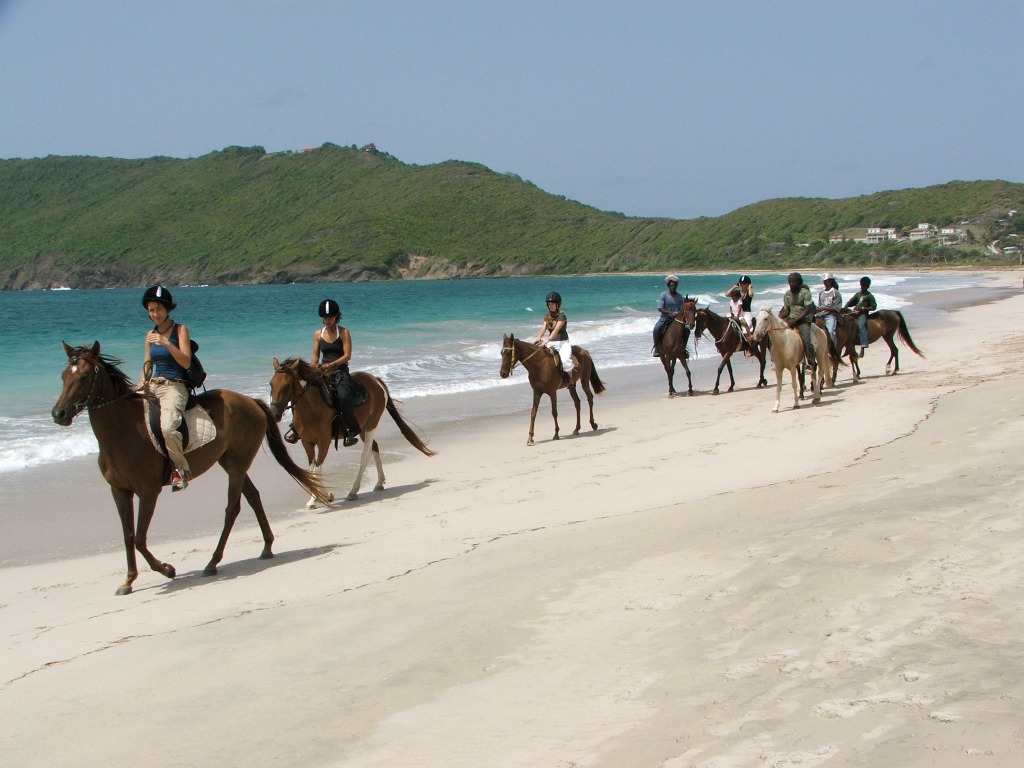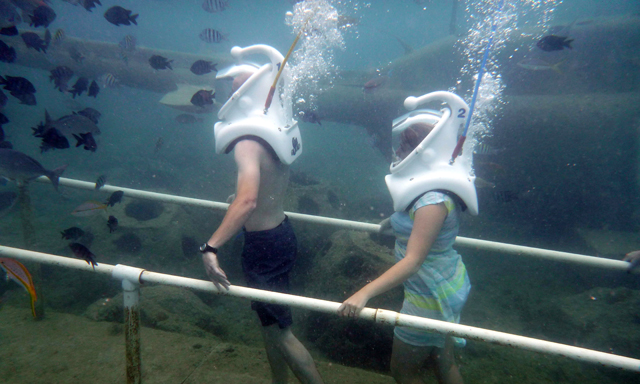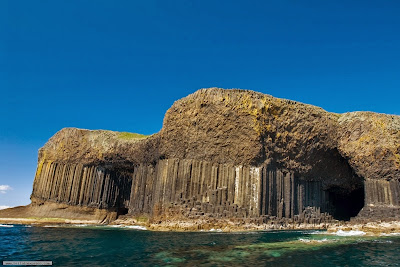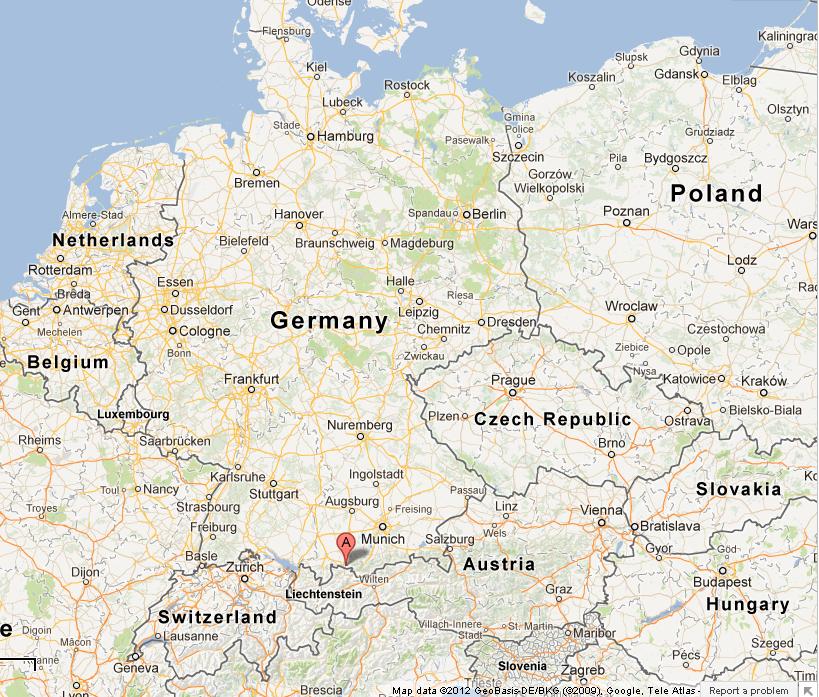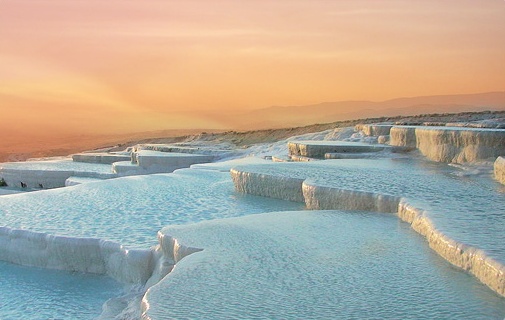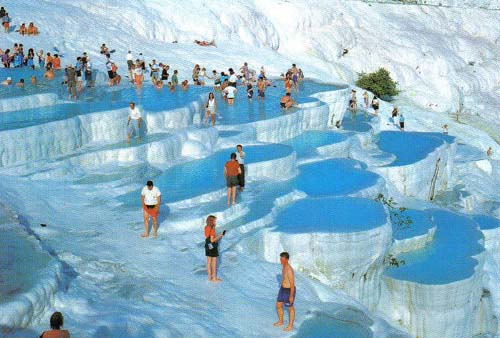Saturday, September 19, 2015
Saturday, September 12, 2015
3:36 AM
No comments
St. Lucia
Saint Lucia is a sovereign island country in the eastern Caribbean Sea on the boundary with the Atlantic Ocean. Part of the Lesser Antilles, it is located north/northeast of the island of Saint Vincent, northwest of Barbados and south of Martinique. It covers a land area of 617 km2 (238.23 sq mi) and has a population of 174,000 (2010). Its capital is Castries.

The French were the island's first European settlers. They signed a treaty with the native Carib Indians in 1660. England took control of the island from 1663 to 1667. In ensuing years, it was at war with France 14 times, and rule of the island changed frequently (it was seven times each ruled by the French and British). In 1814, the British took definitive control of the island. Because it switched so often between British and French control, Saint Lucia was also known as the "Helen of the West Indies".
Representative government came about in 1840 (with universal suffrage from 1953). From 1958 to 1962, the island was a member of the Federation of the West Indies. On 22 February 1979, Saint Lucia became an independent state of the Commonwealth of Nations associated with the United Kingdom. Saint Lucia is a mixed jurisdiction, meaning that it has a legal system based in part on both the civil law and English common law. The Civil Code of St. Lucia of 1867 was based on the Quebec Civil Code of 1866, as supplemented by English common law-style legislation. It is also a member of La Francophonie.

The island nation celebrates its independence every year with a public holiday. The financial sector has weathered the global financial crisis, but the recession has hurt tourism.
Visit & enjoy your holidays:)
Thank you visit my blog !
Friday, September 11, 2015
8:47 AM
No comments
Fingal’s Cave, Scotland
Fingal's Cave is a sea cave on the uninhabited island of Staffa, in the Inner Hebrides of Scotland, known for its natural acoustics. The National Trust for Scotland owns the cave as part of a National Nature Reserve. It became known as Fingal's Cave after the eponymous hero of an epic poem by 18th-century Scots poet-historian James Macpherson.
Formation
Fingal's Cave is formed entirely from hexagonally jointed basalt columns within a Paleocene lava flow, similar in structure to the Giant's Causeway in Northern Ireland and those of nearby Ulva.
In all these cases, cooling on the upper and lower surfaces of the
solidified lava resulted in contraction and fracturing, starting in a
blocky tetragonal pattern and transitioning to a regular hexagonal
fracture pattern with fractures perpendicular to the cooling surfaces.
As cooling continued these cracks gradually extended toward the centre
of the flow, forming the long hexagonal columns we see in the
wave-eroded cross-section today. Similar hexagonal fracture patterns are
found in desiccation cracks in mud where contraction is due to loss of
water instead of cooling.
Acoustics
The cave's size and naturally arched roof, and the eerie sounds produced by the echoes of waves, give it the atmosphere of a natural cathedral. The cave's Gaelic name, An Uaimh Bhinn, means "the melodious cave."
History
Little is known of the early history of Staffa, although the Swiss town of Stäfa on Lake Zurich was named after the island by a monk from nearby Iona. Part of the Ulva estate of the Clan MacQuarrie from an early date until 1777, the cave was brought to the attention of the English-speaking world by 18th-century naturalist Sir Joseph Banks in 1772.It became known as Fingal's Cave after the eponymous hero of an epic poem by 18th century Scots poet-historian James Macpherson. It formed part of his Ossian cycle of poems claimed to have been based on old Scottish Gaelic poems. In Irish mythology, the hero Fingal is known as Fionn mac Cumhaill, and it is suggested that Macpherson rendered the name as Fingal through a misapprehension of the name which in old Gaelic would appear as Finn. The legend of the Giant's Causeway has Fionn or Finn building the causeway between Ireland and Scotland.
Sightseeing
The cave has a large arched entrance and is filled by the sea.
Several sightseeing cruises organised from April to September by local
companies pass the entrance to the cave.
It is also possible to land elsewhere on the island (as some of these
cruises permit) and walk overland to the cave, where a row of fractured
columns forms a walkway just above high-water level permitting
exploration on foot. From the inside, the entrance seems to frame the island of Iona across the water.

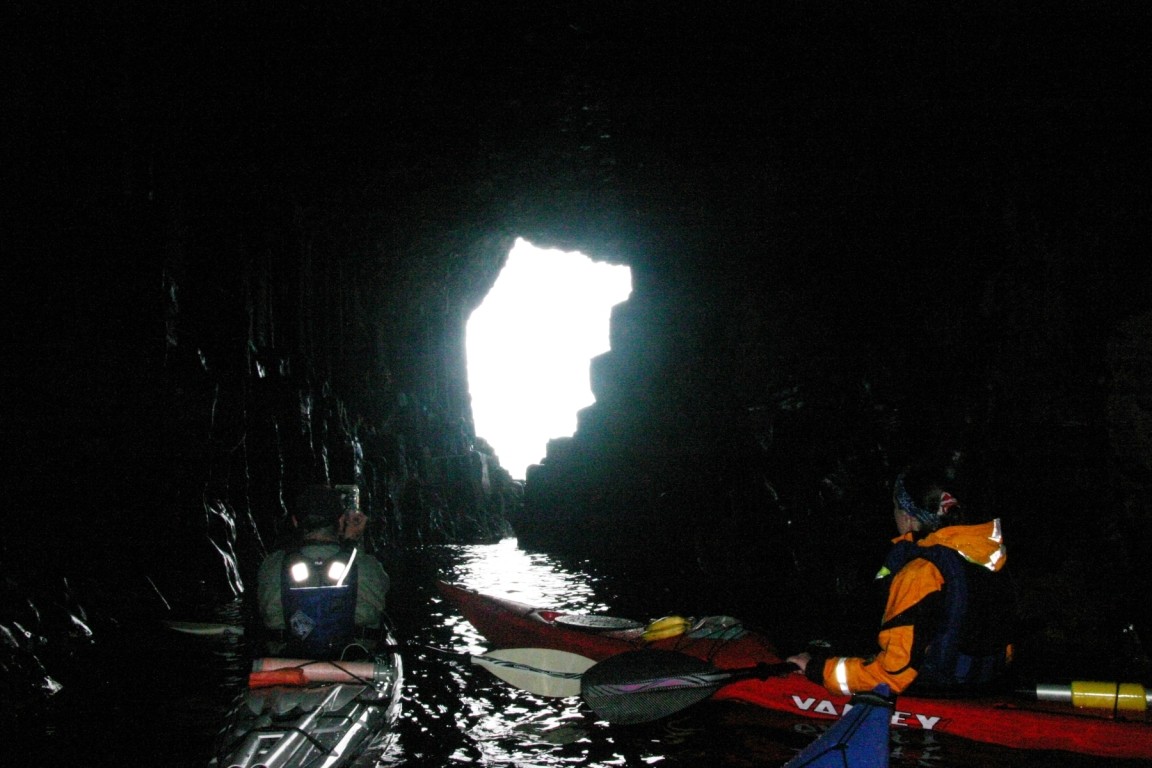
Travel & Enjoy :)
Thank You visit my page...!
3:43 AM
No comments
Ha Long Bay, Vietnam
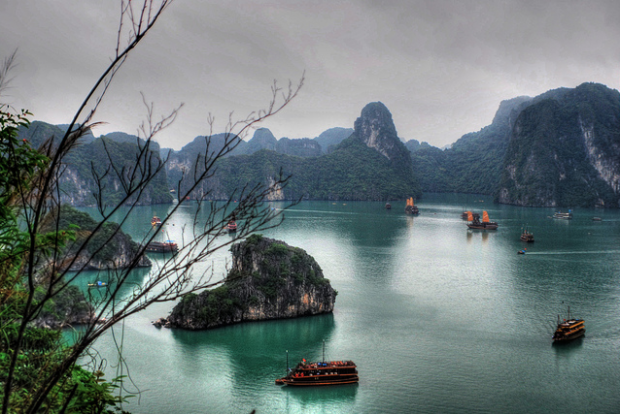
Hạ Long Bay is a UNESCO World Heritage Site, and a popular travel destination, in Quảng Ninh Province, Vietnam. Administratively, the bay belongs to Hạ Long City, Cẩm Phả town, and the part of Vân Đồn District. The bay features thousands of limestone karsts and isles in various sizes and shapes. Hạ Long Bay is a center of a larger zone which includes Bái Tử Long bay to the northeast, and Cát Bà islands to the southwest. These larger zones share similar geological, geographical, geomorphological, climate, and cultural characters.
Hạ Long Bay has an area of around 1,553 km2, including 1,960–2,000 islets, most of which are limestone. The core of the bay has an area of 334 km2 with a high density of 775 islets. The limestone in this bay has gone through 500 million years of formation in different conditions and environments. The evolution of the karst in this bay has taken 20 million years under the impact of the tropical wet climate. The geo-diversity of the environment in the area has created biodiversity, including a tropical evergreen biosystem, oceanic and sea shore biosystem. Hạ Long Bay is home to 14 endemic floral species and 60 endemic faunal species.
Historical research surveys have shown the presence of prehistorical human beings in this area tens of thousands years ago. The successive ancient cultures are the Soi Nhụ culture around 18,000–7000 BC, the Cái Bèo culture 7000–5000 BC and the Hạ Long culture 5,000–3,500 years ago. Hạ Long Bay also marked important events in the history of Vietnam with many artifacts found in Bài Thơ Mount, Đầu Gỗ Cave, Bãi Cháy.
500 years ago, Nguyễn Trãi praised the beauty of Hạ Long Bay in his verse Lộ nhập Vân Đồn, in which he called it "rock wonder in the sky".
In 1962, the Ministry of Culture, Sports and Tourism of North Vietnam
listed Hạ Long Bay in the National Relics and Landscapes publication.
In 1994, the core zone of Hạ Long Bay was listed by UNESCO as a World
Heritage Site according to criterion vii, and listed for a second time
according to criterion viii.
Location
Hạ Long Bay is located in northeastern Vietnam, from E106°56' to
E107°37' and from N20°43' to N21°09'. The bay stretches from Yên Hưng
district, past Hạ Long city, Cẩm Phả town to Vân Đồn District, bordered on the south and southeast by the Gulf of Tonkin, on the north by China, and on the west and southwest by Cát Bà Island.
The bay has a 120 km long coastline and is approximately 1,553 km² in
size with about 2,000 islets. The area designated by UNESCO as the World
Natural Heritage Site incorporates 434 km² with 775 islets, of which
the core zone is delimited by 69 points: Đầu Gỗ island on the west, Ba
Hầm lake on the south and Cống Tây island on the east. The protected
area is from the Cái Dăm petrol store to Quang Hanh commune, Cẩm Phả
town and the surrounding zone.
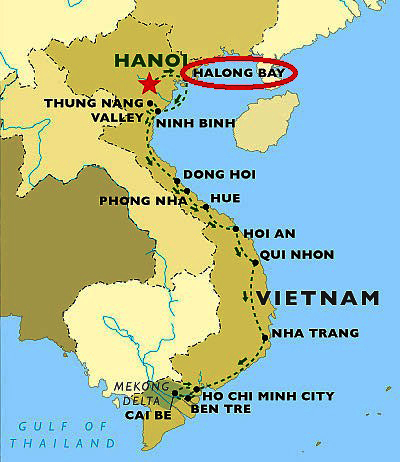
Climate
The climate of the bay is tropical, wet, sea islands, with two
seasons: hot and moist summer, and dry and cold winter. The average
temperature is from 15 °C- 25 °C, and annual rainfall is between 2
meters and 2.2 meters. Hạ Long Bay has the typical diurnal tide system
(tide amplitude ranges from 3.5-4m). The salinity is from 31 to 34.5MT in the dry season and lower in the rainy season.

Tourism



Travel & enjoy ha long bay :)
Thank you visit my blog !
Thursday, September 10, 2015
12:10 AM
No comments
Neuschwanstein Castle, Germany
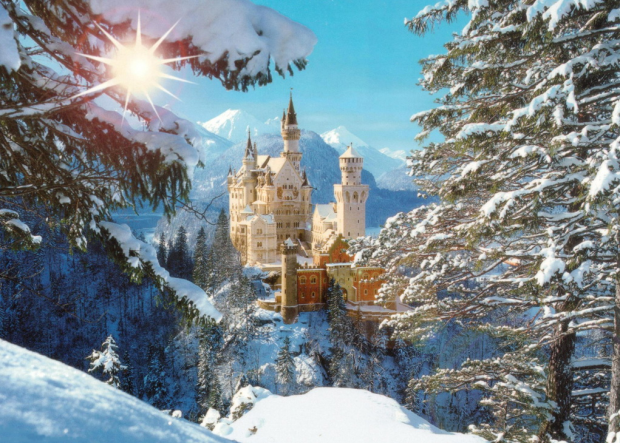
Neuschwanstein Castle (German: Schloss Neuschwanstein, pronounced , English: "New Swanstone Castle) is a nineteenth-century Romanesque Revival palace on a rugged hill above the village of Hohenschwangau near Füssen in southwest Bavaria, Germany. The palace was commissioned by Ludwig II of Bavaria as a retreat and as an homage to Richard Wagner. Ludwig paid for the palace out of his personal fortune and by means of extensive borrowing, rather than Bavarian public funds.
The palace was intended as a personal refuge for the reclusive king, but it was opened to the paying public immediately after his death in 1886. Since then more than 61 million people have visited Neuschwanstein Castle. More than 1.3 million people visit annually, with as many as 6,000 per day in the summer. The palace has appeared prominently in several movies and was the inspiration for Disneyland's Sleeping Beauty Castle and later, similar structures.
Location
The municipality of Schwangau lies at an elevation of 800 m (2,620 ft) at the south west border of the German state of Bavaria. Its surroundings are characterized by the transition between the Alpine foothills in the south (toward the nearby Austrian border) and a hilly landscape in the north that appears flat by comparison.
In the Middle Ages, three castles overlooked the villages. One was called Schwanstein Castle. In 1832, Ludwig's father King Maximilian II of Bavaria bought its ruins to replace them with the comfortable neo-Gothic palace known as Hohenschwangau Castle.
Finished in 1837, the palace became his family's summer residence, and
his elder son Ludwig (born 1845) spent a large part of his childhood
here.
Vorderhohenschwangau Castle and Hinterhohenschwangau Castle sat on a rugged hill overlooking Schwanstein Castle, two nearby lakes (Alpsee and Schwansee), and the village. Separated only by a moat, they jointly consisted of a hall, a keep, and a fortified tower house.
In the nineteenth century only ruins remained of the twin medieval
castles, but those of Hinterhohenschwangau served as a lookout place
known as Sylphenturm.
Monday, September 7, 2015
11:01 PM
No comments
Santorini, Greece

Santorini , classically Thera , and officially Thira , is an island in the southern Aegean Sea, about 200 km (120 mi) southeast of Greece's mainland. It is the largest island of a small, circular archipelago which bears the same name and is the remnant of a volcanic caldera. It forms the southernmost member of the Cyclades group of islands, with an area of approximately 73 km2
(28 sq mi) and a 2011 census population of 15,550. The municipality of
Santorini includes the inhabited islands of Santorini and Therasia and the uninhabited islands of Nea Kameni, Palaia Kameni, Aspronisi, and Christiana. The total land area is 90.623 km2 (34.990 sq mi). Santorini is part of the Thira regional unit.
Santorini is essentially what remains after an enormous volcanic eruption that destroyed the earliest settlements on a formerly single island, and created the current geological caldera. A giant central, rectangular lagoon, which measures about 12 by 7 km (7.5 by 4.3 mi), is surrounded by 300 m (980 ft) high, steep cliffs on three sides. The main island slopes downward to the Aegean Sea. On the fourth side, the lagoon is separated from the sea by another much smaller island called Therasia; the lagoon is connected to the sea in two places, in the northwest and southwest. The depth of the caldera, at 400m, makes it possible for all but the largest ships to anchor anywhere in the protected bay; there is also a fisherman harbour at Vlychada, on the southwestern coast. The island's principal port is Athinias. The capital, Fira, clings to the top of the cliff looking down on the lagoon. The volcanic rocks present from the prior eruptions feature olivine and have a small presence of hornblende.
It is the most active volcanic centre in the South Aegean Volcanic Arc,
though what remains today is chiefly a water-filled caldera. The
volcanic arc is approximately 500 km (310 mi) long and 20 to 40 km (12
to 25 mi) wide. The region first became volcanically active around 3–4
million years ago, though volcanism on Thera began around 2 million
years ago with the extrusion of dacitic lavas from vents around the Akrotiri.
The island is the site of one of the largest volcanic eruptions in recorded history: the Minoan eruption (sometimes called the Thera eruption), which occurred some 3,600 years ago at the height of the Minoan civilization. The eruption left a large caldera surrounded by volcanic ash deposits hundreds of metres deep and may have led indirectly to the collapse of the Minoan civilization on the island of Crete, 110 km (68 mi) to the south, through a gigantic tsunami. Another popular theory holds that the Thera eruption is the source of the legend of Atlantis.

MAP
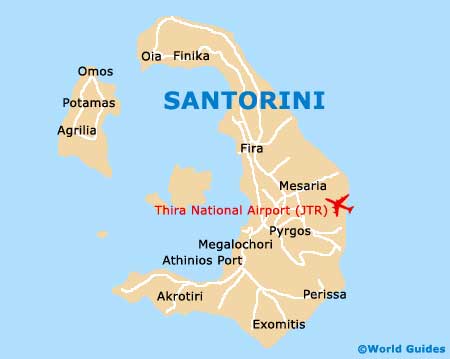
Saturday, September 5, 2015
10:48 PM
No comments
Pamukkale, Turkey
Pamukkale, meaning "cotton castle" in Turkish, is a natural site in Denizli Province in southwestern Turkey. The city contains hot springs and travertines, terraces of carbonate minerals left by the flowing water. It is located in Turkey's Inner Aegean region, in the River Menderes valley, which has a temperate climate for most of the year.
The ancient Greco-Roman and Byzantine city of Hierapolis was built on top of the white "castle" which is in total about 2,700 metres (8,860 ft) long, 600 m (1,970 ft) wide and 160 m (525 ft) high. It can be seen from the hills on the opposite side of the valley in the town of Denizli, 20 km away.
Tourism is and has been a major industry. People have bathed in its pools for thousands of years. As recently as the mid-20th century, hotels were built over the ruins of Hierapolis, causing considerable damage. An approach road was built from the valley over the terraces, and motor bikes were allowed to go up and down the slopes. When the area was declared a World Heritage Site, the hotels were demolished and the road removed and replaced with artificial pools. Wearing shoes in the water is prohibited to protect the deposits.
Museum
In this museum, alongside historical artifacts from Hierapolis, there are also artifacts from Laodiceia, Colossae, Tripolis, Attuda and other towns of the Lycos (Çürüksu) valley. In addition to these, the museum has a large section devoted to artifacts found at Beycesultan Hüyük that includes some of the most beautiful examples of Bronze Age craft.Artifacts from the Caria, Pisidia and Lydia regions are also on display in this museum. The museum’s exhibition space consists of three closed areas of the Hierapolis Bath and the open areas in the eastern side which are known to have been used as the library and gymnasium. The artifacts in open exhibition space are mostly marble and stone. Hierapolis is broken down into ruins.


Tourist attraction
Pamukkale is a tourist attraction. It is recognized as a World Heritage Site together with Hierapolis. Hierapolis-Pamukkale was made a World Heritage Site in 1988.The underground volcanic activity which causes the hot springs also forced carbon dioxide into a cave, which was called the Plutonium, which here means "place of the god Pluto". This cave was used for religious purposes by priests of Cybele, who found ways to appear immune to the suffocating gas.
Tadpoles can be found in the pools.
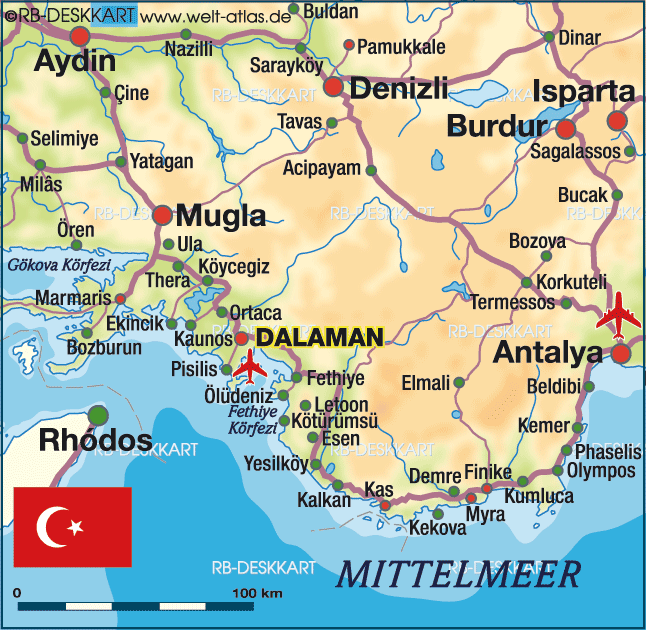
Subscribe to:
Posts (Atom)





